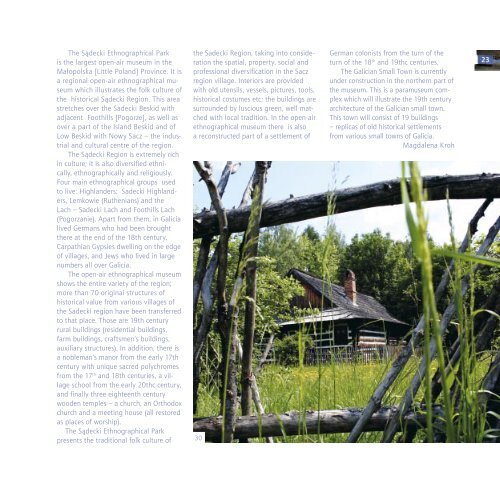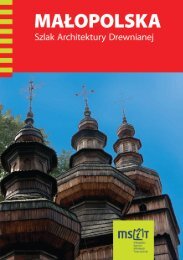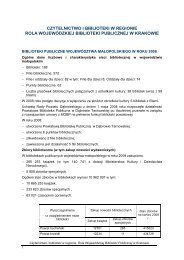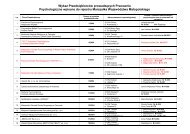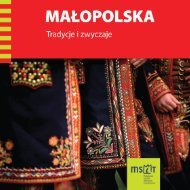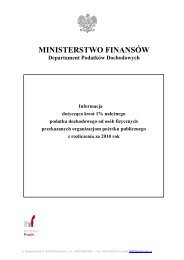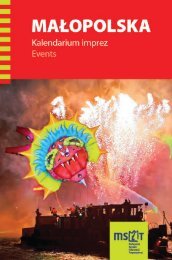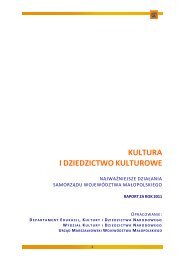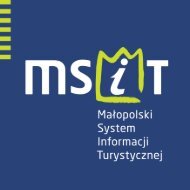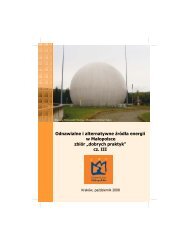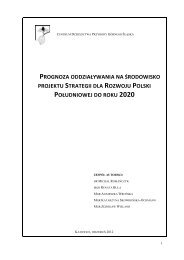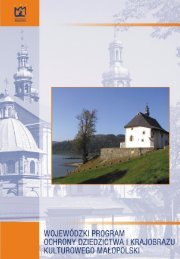ISBN 978-83-60538-18-0 Kraków 2008 - Województwo Małopolskie
ISBN 978-83-60538-18-0 Kraków 2008 - Województwo Małopolskie
ISBN 978-83-60538-18-0 Kraków 2008 - Województwo Małopolskie
- No tags were found...
Create successful ePaper yourself
Turn your PDF publications into a flip-book with our unique Google optimized e-Paper software.
The Sądecki Ethnographical Parkis the largest open-air museum in theMałopolska [Little Poland] Province. It isa regional open-air ethnographical museumwhich illustrates the folk culture ofthe historical Sądecki Region. This areastretches over the Sadecki Beskid withadjacent Foothills [Pogorze], as well asover a part of the Island Beskid and ofLow Beskid with Nowy Sacz – the industrialand cultural centre of the region.The Sądecki Region is extremely richin culture; it is also diversified ethnically,ethnographically and religiously.Four main ethnographical groups usedto live: Highlanders: Sadecki Highlanders,Lemkowie (Ruthenians) and theLach – Sadecki Lach and Foothills Lach(Pogorzanie). Apart from them, in Galicialived Germans who had been broughtthere at the end of the <strong>18</strong>th century,Carpathian Gypsies dwelling on the edgeof villages, and Jews who lived in largenumbers all over Galicia.The open-air ethnographical museumshows the entire variety of the region;more than 70 original structures ofhistorical value from various villages ofthe Sadecki region have been transferredto that place. Those are 19th centuryrural buildings (residential buildings,farm buildings, craftsmen’s buildings,auxiliary structures). In addition, there isa nobleman’s manor from the early 17thcentury with unique sacred polychromesfrom the 17 th and <strong>18</strong>th centuries, a villageschool from the early 20thc century,and finally three eighteenth centurywooden temples – a church, an Orthodoxchurch and a meeting house (all restoredas places of worship).The Sądecki Ethnographical Parkpresents the traditional folk culture ofthe Sadecki Region, taking into considerationthe spatial, property, social andprofessional diversification in the Saczregion village. Interiors are providedwith old utensils, vessels, pictures, tools,historical costumes etc; the buildings aresurrounded by luscious green, well matchedwith local tradition. In the open-airethnographical museum there is alsoa reconstructed part of a settlement of30German colonists from the turn of theturn of the <strong>18</strong> th and 19thc centuries.The Galician Small Town is currentlyunder construction in the northern part ofthe museum. This is a paramuseum complexwhich will illustrate the 19th centuryarchitecture of the Galician small town.This town will consist of 19 buildings– replicas of old historical settlementsfrom various small towns of Galicia.Magdalena Kroh23


